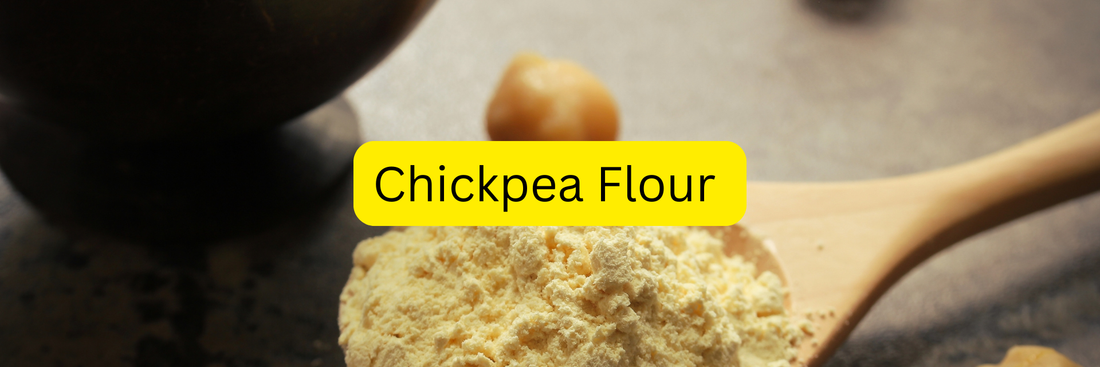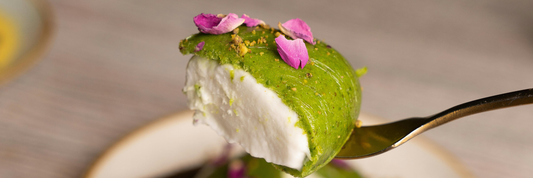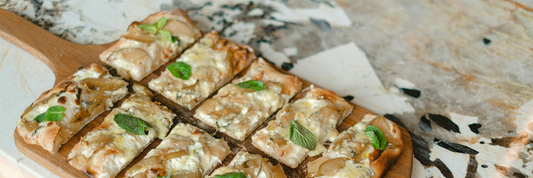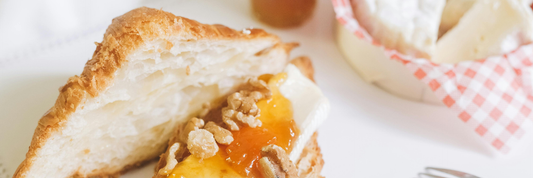In recent years, chickpea flour also known as besan, gram flour, or garbanzo bean flour has gained global attention as one of the healthiest, most sustainable alternatives to wheat flour. Made from finely ground chickpeas, this high-protein, gluten-free flour has been a staple in Indian, Mediterranean, and Middle Eastern cuisines for centuries.
Whether you’re a baker searching for a nutritious flour substitute, a vegan looking for a plant-based protein source, or simply curious about how chickpea flour benefits your health, this comprehensive guide will walk you through everything you need to know from its nutrition and uses to the best recipes and storage tips.
-
Wheat Flour – Types, Nutrition Facts, Health Benefits & Best Uses
-
Types of Flour: A Complete Guide for Professional Bakers and Pastry Chefs
-
What Is Flour? Definition, Types, and Uses Explained
What Is Chickpea Flour?

Chickpea flour is a fine powder made by grinding dried chickpeas (garbanzo beans). It’s naturally gluten-free, high in protein and fiber, and contains essential vitamins and minerals that support overall health.
Depending on the variety of chickpeas used, chickpea flour may also be called:
- Besan or Gram flour – made from split brown chickpeas (chana dal)
- Garbanzo bean flour – made from white chickpeas
- Sattu – a roasted version with a nutty aroma and smoky flavor
Unlike refined wheat flour, chickpea flour retains all the nutrients of the whole legume, making it a nutrient-dense, whole-food alternative for gluten-free and plant-based diets.
How Chickpea Flour Is Made

Chickpea flour is traditionally made through dry milling or stone grinding dried chickpeas. The process involves:
- Cleaning and drying the chickpeas
- Removing impurities and broken seeds
- Grinding them into a fine, light-yellow powder
- Optionally roasting for deeper flavor and longer shelf life
You can even make homemade chickpea flour by blending dried chickpeas in a high-powered blender and sifting the powder for a smooth texture.
Chickpea Flour Nutrition Facts
Chickpea flour is not only flavorful but also nutrient-rich. One cup (92g) provides the following:
| Nutrient | Amount | % Daily Value |
|---|---|---|
| Calories | 356 kcal | — |
| Protein | 21 g | 42% |
| Carbohydrates | 53 g | 18% |
| Fiber | 10 g | 40% |
| Fat | 6 g | 9% |
| Folate (Vitamin B9) | 400 µg | 100% |
| Iron | 4.9 mg | 27% |
| Magnesium | 120 mg | 30% |
| Potassium | 775 mg | 22% |
Key takeaway: Chickpea flour is a high-protein, fiber-rich, and micronutrient-dense flour that supports energy, heart health, and digestion.
Health Benefits of Chickpea Flour

1. Supports Weight Management
The high protein and fiber content helps you stay full longer, reducing cravings and overeating.
2. Balances Blood Sugar
With a low glycemic index, chickpea flour helps stabilize blood glucose and prevent energy crashes.
3. Promotes Heart Health
Its soluble fiber may help lower bad cholesterol (LDL) levels, reducing cardiovascular risk.
4. Boosts Energy and Immunity
Chickpea flour contains iron, magnesium, and folate, essential for oxygen transport and immune support.
5. Perfect for Gluten-Free and Vegan Diets
Naturally gluten-free and plant-based, chickpea flour is ideal for people with celiac disease, gluten sensitivity, or those following vegan diets.
Culinary Uses of Chickpea Flour

One of the best things about chickpea flour is its versatility. It can be used for baking, frying, thickening, and even as a vegan egg substitute.
1. Savory Dishes
- Pakoras and Bhajis: Classic Indian fritters made with spiced chickpea batter.
- Socca (or Farinata): A thin, crispy pancake from France and Italy made from chickpea flour, olive oil, and water.
- Burmese Tofu: A soy-free tofu made entirely from chickpea flour.
2. Baking
Use chickpea flour to make:
- Gluten-free muffins, pancakes, and waffles
- Savory breads and crackers
- Brownies or cookies blended with oat or almond flour
3. Thickener & Coating
It acts as a natural thickener for soups and stews, or as a crispy coating for frying vegetables or tofu.
4. Egg Substitute for Vegans
Mix 1 tablespoon of chickpea flour with 3 tablespoons of water to replace one egg in vegan baking recipes.
How to Cook & Bake with Chickpea Flour
- Hydration: Let the batter rest for 15–30 minutes to improve texture and flavor.
- Substitution: Replace 25–30% of wheat flour with chickpea flour in baking recipes.
- Flavor tip: Lightly toast the flour before using to enhance its nutty aroma and remove any raw taste.
- Combining flours: Mix with rice, tapioca, or oat flour for balanced gluten-free baking results.
Buying and Storage Guide

When purchasing chickpea flour, pay attention to:
- Type: Choose between besan (brown chickpeas) or garbanzo flour (white chickpeas).
- Labels: Prefer organic, non-GMO, or gluten-free certified brands.
- Texture: Fine flour is best for baking; coarse for batters.
- Storage: Keep in an airtight container, away from light and moisture. Refrigerate for long-term freshness.
Chickpea Flour vs Other Flours
| Flour Type | Protein | Fiber | Gluten-Free | Common Uses |
|---|---|---|---|---|
| Chickpea flour | 21 g | 10 g | Yes | Pancakes, fritters, breads |
| Wheat flour | 13 g | 3 g | No | Cakes, cookies, breads |
| Almond flour | 20 g | 12 g | Yes | Low-carb baking |
| Oat flour | 17 g | 9 g | Yes | Pancakes, cookies |
Sustainability and Environmental Impact
Chickpeas are one of the most sustainable crops in the world. They enrich soil naturally by fixing nitrogen, reducing the need for fertilizers.
Compared to wheat or rice, chickpeas require less water and have a lower carbon footprint, making chickpea flour a truly eco-friendly ingredient.
Precautions and Allergies
- Legume allergies: People allergic to peanuts or lentils should consume chickpea flour cautiously.
- Digestive sensitivity: Cooking or roasting the flour helps improve digestibility.
- Antinutrients: Soaking or roasting can reduce phytates that limit mineral absorption.
FAQs About Chickpea Flour
1. Is chickpea flour gluten-free?
Yes, chickpea flour is naturally gluten-free and ideal for gluten-free baking.
2. Is chickpea flour the same as besan or gram flour?
Not exactly. Besan is made from brown chickpeas (chana dal), while garbanzo flour uses white chickpeas.
3. What does chickpea flour taste like?
It has a nutty, earthy flavor that becomes mild when cooked or toasted.
4. Can chickpea flour replace all-purpose flour?
You can replace up to 25–30% of wheat flour in baking recipes for extra protein and fiber.
5. Is chickpea flour good for weight loss?
Yes. High in protein and fiber, it helps you stay full longer and supports healthy metabolism.
6. How long does chickpea flour last?
Up to 6 months in the pantry or 1 year in the refrigerator in an airtight container.
Conclusion
Whether you call it chickpea flour, besan, or gram flour, this humble ingredient offers an incredible balance of nutrition, versatility, and sustainability. It’s rich in protein, fiber, and essential minerals perfect for gluten-free and vegan diets.
From crispy pakoras to fluffy socca pancakes or nutrient-dense baked goods, chickpea flour can transform your recipes while nourishing your body.
Next time you cook, swap a portion of wheat flour with chickpea flour and experience the wholesome difference yourself!







